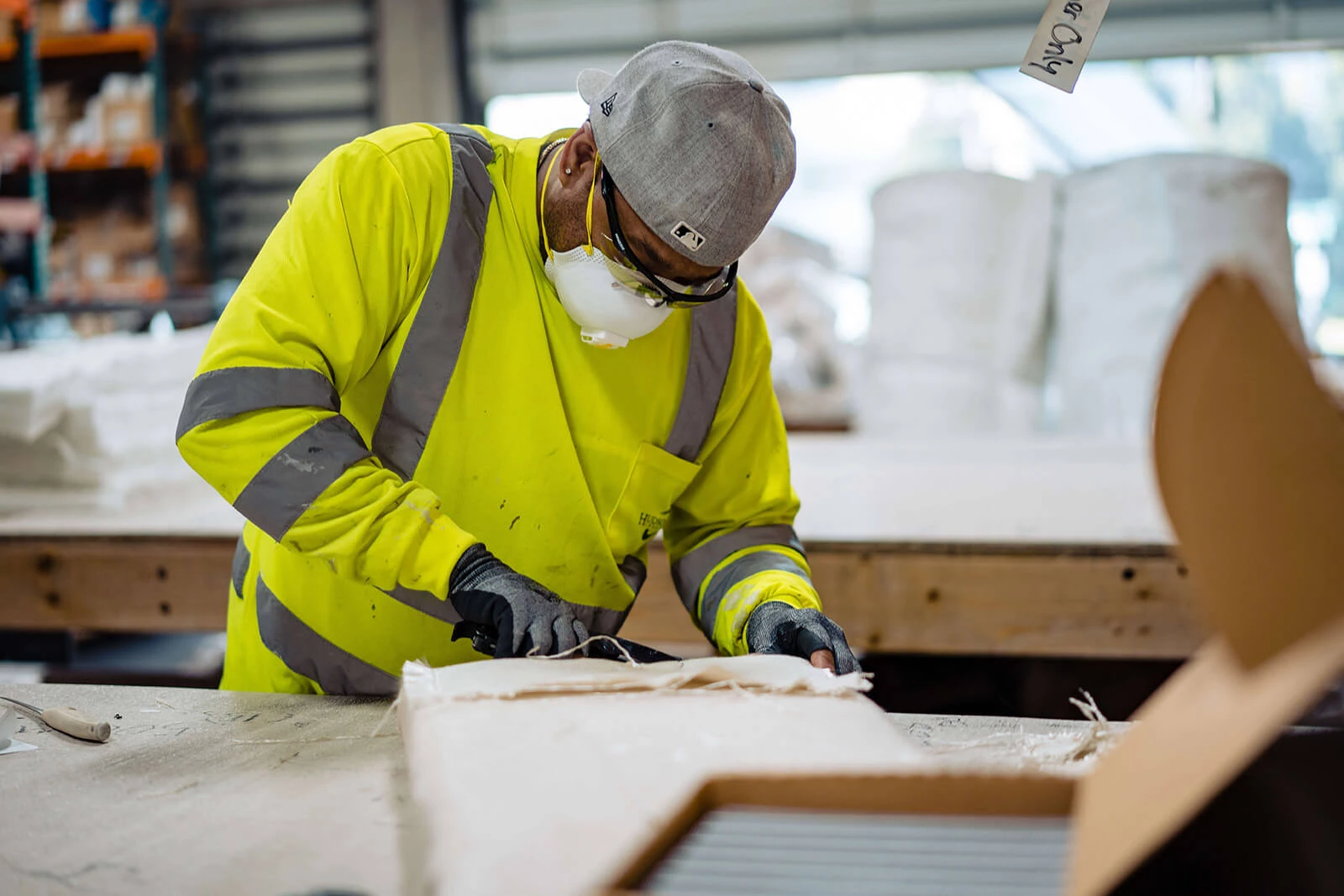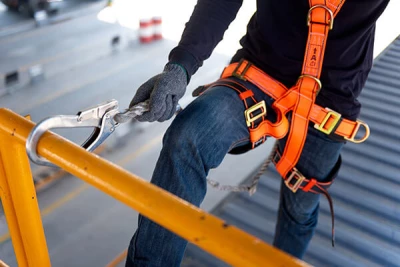Going back to School, Safely
Published 9.5.2022
While summer isn’t over quite yet, for many kids those lazy, hazy, crazy days are coming to an end as they start returning to school for another year of education. Classroom supplies and new outfits have been bought, before-and-after school care has been arranged, team sports and uniforms paid for, bedtimes reinstituted. Heck, everything is ready to go, right?
Well before you and your significant other start celebrating by sending the little ones back to school, it’s a good idea to talk about safety as a family. Talking to your kids, grandkids, little brothers or sisters or even your nieces and nephews about safety is important. In addition to providing what could be life-saving information, it helps them stay away from specific dangers, these discussions let your loved-ones know that their safety is important to you, which in turn will help them become more aware of potentially dangerous situations and conditions – giving them a better chance of avoiding such dangers altogether.
- Looking out for children who are walking to their bus stop or are on their bike-ride to school. These children are usually very comfortable with their surroundings, which makes them more likely to take risks; this could be failing to look both ways before crossing a street or having both ears covered while listening to music.
- Look out for school buses that are slowing down or have stopped to load and unload children. No matter how much of a rush you are in, never attempt to pass a stopped school bus or honk at the driver.
- Slow down in school zones when warning flashers are blinking, remember to provide the pedestrians' right-of-way. Speed limits in school zones are made to keep our youth and pedestrians safe, remember to follow the speed limits of school zones to keep our communities safe.
- Educate your children about traffic safety, including how to read road signs and how to safely cross the street. Although pedestrians have the right-of-way, we must also do our part.
Remember This!
Whether you're headed back to school, or back to work, it's up to each one of us to practice safe commuting. Looking out for the young and vulnerable, and ourselves, can significantly reduce any "back-to-school" accidents. Let's keep ourselves as far as we can from becoming an end of summer statistic.
You Are Not Alone
Published 9.12.2022
When dealing with mental health challenges, it can feel like you are alone – but while everyone’s personal challenges are different, you are far from alone.
It’s so important to understand that personally, people are there for us, and professionals are available to provide treatment and support. We need each other, especially when dealing with the stress of everyday life after a global pandemic. Taking care of our physical and our mental health is vital. It is reported that approximately 20% of adults in the U.S. will experience mental illness each year, therefore we want to share some of the ways you can take care of yourself today and always.
TAKE CARE OF YOUR BODY.
Start with the basics - eat nourishing, well-balanced meals, get at least 30 minutes of physical activity each day, and try to get 7-8 hours of sleep each night. Take a moment when you wake and before you fall asleep, to intentionally breathe slowly and deeply.
TAKE CARE OF YOUR MENTAL HEALTH
If you are being treated for a mental health diagnosis, make sure that you continue to take your medication as prescribed. Does your therapist or mental health care provider offer telehealth appointments?
DO SOMETHING FUN
Make sure to take time everyday to do something you find fun or creative. A few examples include taking a walk, being in nature, playing games, or working on a craft. Some days, this may not be possible, but try to carve out a few minutes to relax and clear your mind - you are worth the time.
CONNECT WITH OTHERS
Talk with people you trust about how you are feeling. Stay connected with friends, family, and neighbors virtually, when you can't see them in person. Keep in touch with people who care for you and who you know you can contact for support if your mental health declines.
DON'T TRY TO DO EVERYTHING TODAY
If you are feeling overwhelmed, decide what needs to be prioritized and what can wait. Your schedule may change, and your priorities may shift, and that is okay. Be sure to recognize what you accomplished at the end of the day; small successes lead to large successes.
Remember This!
You are NOT alone. It is essential to prioritize our mental health and stay connected with friends, family, and peers. No one should feel alone in their mental health journey or without the resources and support they need. If you need help or know someone who does, please don't hesitate to contact a healthcare professional today.
Alcohol Use & Abuse
Published 9.19.2022
You might drink to socialize, celebrate, or relax. While enjoying an occasional alcoholic beverage may not harm your health, drinking in excess can have negative effects on your body and well-being. Alcohol is the most frequently misused substance in the United States and according to the National Survey on Drug Use and Health nearly 15 million Americans have been diagnosed with an alcohol use disorder (AUD).
How much is too much? There is no specific amount of alcohol or frequency of drinking that determines the nature of AUD, it's unique to everyone. If you choose to drink, moderation is key.
According to the National Institute on Alcohol Abuse & Alcoholism defines several types of drinking, which includes:
- Moderate Drinking is classified as 1 or less drinks per day for women, and 2 or less for men.
- Binge Drinking is the most common form of excessive drinking. When excessive amounts of alcohol are consumed in a short period of time. 4+ drinks during a single session for women, and 5+ drinks during a single session for men is considered binge drinking.
- Heavy Drinking is when an individual consumes more than the daily or weekly guideline amounts. For women, 8+ drinks per week and 15+ drinks per week for men.
What are the effects of alcohol?
Whether you consider yourself a social drinker or are AUD diagnosed, drinking too much can lead to problems in your relationships, job performances, and your health.
Are you abusing alcohol?
If you notice that your alcohol use is negatively impacting your life, here are some questions to ask yourself:
- Do you use alcohol to escape problems when you are upset?
- Is it difficult to stop drinking after you have had one or two drinks?
- Have you tried, and failed, to drink less alcohol or drink none at all?
- Have friends or family members tried to express their concerns about your drinking?
- Does or has your drinking ever affected your work ethic and employment?
If you answered yes to one or more of the questions above, then you are likely drinking too much. It's important to know that regardless of the severity of your drinking, recovery is possible!
Remember This!
If you believe you or someone you know is struggling with a drinking problem, treatment is available. With the right treatment and support, individuals can safely stop drinking and lead healthier lives.
Eye Injuries & Prevention
Published 9.26.2022
Our eyes are one of our greatest assets. They give us the ability to see the world around us. And we if don’t take care of them and protect our eyes from injuries at work we could easily lose the world we know. Imagine not having one of your senses or even only having partial use of a certain sense. It will not only change the way you take on the world around you, but also the way the world accepts you.
The CDC estimates there 2,000 eye injuries every single day on job sites. That accumulates to over $300 million dollars a year for cost to employers. So, it is important to eliminate or engineer out the hazards that could pose hazards to our eyes at work. Many hazards on the jobsite cannot be fully eliminated so proper eye protection is also very critical.
Common hazards to eyes that we as a company could come across:
- Flying dust and debris from insulation, firestop, and other trades in the area
- Chemicals
- Blunt trauma to the eye(s) along with anything in the air striking the eye, even when the eyelid is shut, can cause a person to lose their eyeball completely.
- Burns due to UV exposure around welders without having the proper preventative eye covers on can cause damage to the retina.
Tips on how to protect your eyes:
- Identify all the potential eye hazards in your work area, and have the proper safeguards to prevent an eye injury
- Eliminate or lessen the chance of getting debris in your eyes by facing opposite of where the wind is blowing around
- Always wear your approved safety glasses if your task has you working with chemicals, especially ones that can splash or ricochet into your eyes.
- If there is any welding around your area of work, get with the trade that is welding to set up a UV screen to protect you and your coworkers' eyes.
i got something in my eye, what do i do?
Find an eyewash station or saline bottle to rinse your eye out. If a chemical gets into your eye, remove your contacts if you have them on, and begin to rinse out your eyes. If only one eye has a chemical or object in it, rotate your eye towards the floor - the chemical will not be able to cross the bridge of the nose and affect the other eye. Get to an eyewash station and rinse your peepers for at least 15 minutes - it's crucial to not go below the suggested fifteen minutes.





